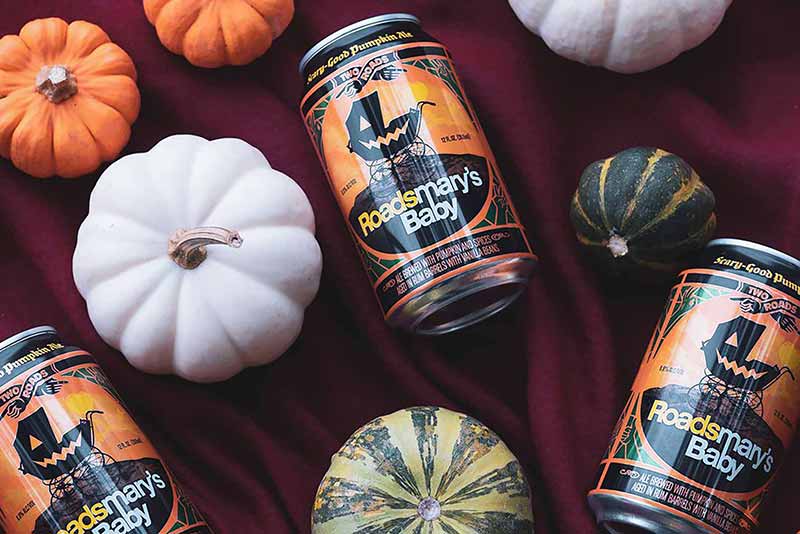
We’re already well past the halfway point of the year. With fall fast approaching, many breweries turn to darker, maltier styles. But as summer transitions to fall, one other style inevitably always pops up—pumpkin beers.
For many, autumn means the time of year when one of the more popular—if not controversial —seasonal beer styles hits the market.
We chatted with experts of the style, including Shipyard Founder-turned-Consultant Alan Pugsley, who developed one of the most well-known pumpkin beers of all time, Two Roads Brewing Master Brewer Phil Markowski, and Bastet Brewing Co-Founder Huston Lett.
Turns out not all pumpkin beers are created equal. All three experts share how to coax the most flavor out of pumpkin, the need for balance, and how they brew the best pumpkin beer.
(Above photography courtesy of @tworoadsbrewing)
What We’ll Cover in This Piece:
Affordable, Industry-Leading Brewery Software
How Do Experts Define a Pumpkin Beer?
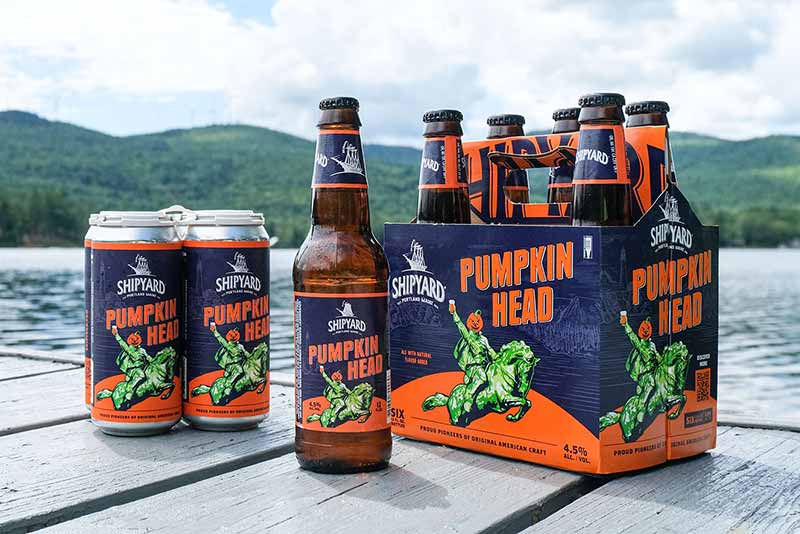
Photography courtesy of Shipyard Brewing Company
Pugsley has been making the style for decades, first with Kennebunkport Brewing in 1993 before the brewery rebranded as Shipyard a year later. So he knows a thing or two about making a quality pumpkin beer.
What does Pugsley seek in his version? Basically, the same thing he seeks in all the beers he’s crafted over the years.
“Balance and drinkability,” Pugsley says. “Nothing too heavy or light, balanced with pumpkin spices and the pumpkin itself. It’s a lighter product, so balance is the key.”
Markowski says you can really overdo it with the spices if you’re not careful.
“I look for balance. And no one ingredient overdone. Usually, subtlety is an attribute,” he says. “The ability to restrain yourself and understand that the public doesn’t need a malt bomb or a spice bomb. It’s good to have balance.”
Lett thinks along the same lines as Pugsley and Markowski.
“The best version to me is a beer that showcases pumpkin and pumpkin spice,” Lett says, adding, “with a complementary maltiness and a balanced hop profile.”
Why Should You Brew a Polarizing Style Like Pumpkin Beer?
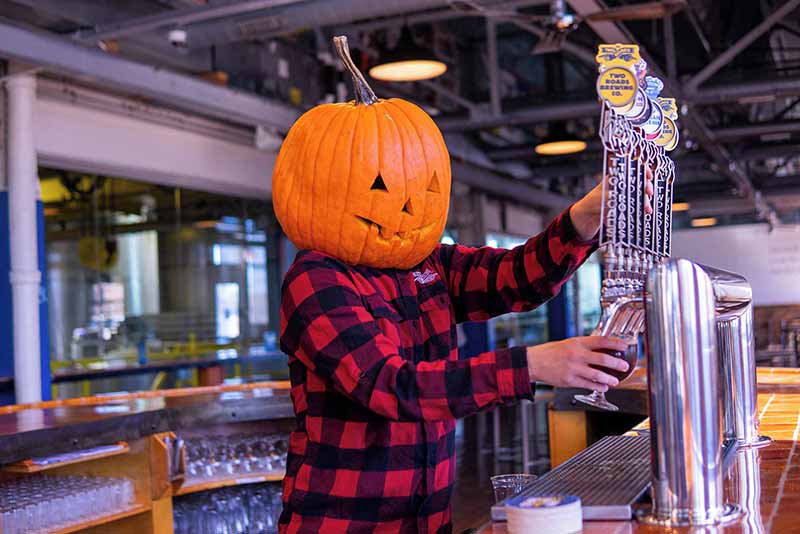
Photography courtesy of @tworoadsbrewing
Over the years, the pumpkin beer has become a polarizing style—along the same lines of putting pineapple on pizza, perhaps. But back when Pugsley brewed the divisive ale, it was a novelty that people gravitated toward.
Pugsley says Shipyard on the East Coast and Bill Owens-owned Buffalo Bill’s Brewery in California—the now-reopened Buffalo Bill’s—were the first to really attack the style.
“In essence we were the first on the block with pumpkin beer,” he says, noting it was created on a suggestion to try to make an autumn-style seasonal beer.
Times have changed. There have been good versions, great versions, and not-so-good takes on pumpkin beer. Pugsley says if brewers want to try crafting a pumpkin beer, they have to do it with the right frame of mind.
“I would not say brewers ‘should’ make it,” Pugsley says. “In fact, if not produced in a really drinkable fashion, I suggest they don’t.”
Markowski has been brewing pumpkin beer since the early 1990s. He liked the idea of doing it to offer something different, and a lot of people were taking him up on the offer. He doesn’t think the style is polarizing, more that the masses have grown tired of “pumpkin-flavored everything.”
“But if such things weren’t popular and didn’t sell, then I guess pumpkin beers and pumpkin-flavored everything wouldn’t exist,” Markowski adds. “I see it as something that seems to make a lot of people happy.”
Lett doesn’t see what all the fuss is about with pumpkin beers. He says his only qualm is seeing them come out earlier and earlier in the year.
“[Bastet Co-Founder] Tom [Ross] and I have been brewing pumpkin beer for quite some time,” Lett says.
As to why you should brew them, Lett thinks it’s obvious.
“People love pumpkin everything. Pumpkin latte, pumpkin beer, pumpkin soda, pumpkin candles, pumpkin everything,” Lett says. “Why not give the people what they want? Especially if it’s delicious!”
How Do You Add Flavor to the Best Pumpkin Beer?

Photography courtesy of Shipyard Brewing Company
Markowski says that most often when people think of pumpkin, they make an association to pumpkin pie, which is typically about the spices—cinnamon, nutmeg, allspice, cloves—added to the gourd while making the dessert.
But in the end, it’s still a beer.
“Don’t bury the beer character with spices. Let the spices be noticed, but not overwhelming,” he says. “I go back to balance: You don’t want it so sweet; you want it to be beer-like.”
Markowski says Two Roads puts pumpkin puree in the mash of their beers. He also adds pumpkin in the kettle for mouthfeel and incorporates the aforementioned spices to round out the brew session.
“We use a larger amount of puree in the kettle,” he explains. “And we use powdered spices because they are more consistent, as well as vanilla. We add those at the very end of the boil.”
Lett takes a different approach than Two Roads, opting to roast pumpkin before adding it to the mash.
“This creates a Maillard reaction which intensifies the color and flavor that gets released from the pumpkin into the beer,” he says. “I then add a small amount of pumpkin spice to the boil. Then I add more spice post-fermentation prior to packaging. I feel like this adds depth to the pumpkin flavor.”
When Pugsley started making pumpkin beers three decades ago, he took a couple of kegs of leftover summer ale, went to the kitchen, picked up the cinnamon spice, nutmeg, and allspice, diced up some pumpkin, and mixed them all together.
“I added portions of different blends to a pint until I came up with something interesting and fall-ish,” Pugsley says.
The now-brewery consultant says that pumpkin beer truly is a personal creation.
“It really depends on what you like as a brewer,” he says, adding that one mistake brewers can make is focusing solely on the gourd. “It’s unimpressive.”
Lett feels the opposite of the pumpkin addition.
“Some brewers don’t think pumpkin adds any flavor,” he says. “I completely disagree.”
What Style of Beer Is Great for a Pumpkin Beer?
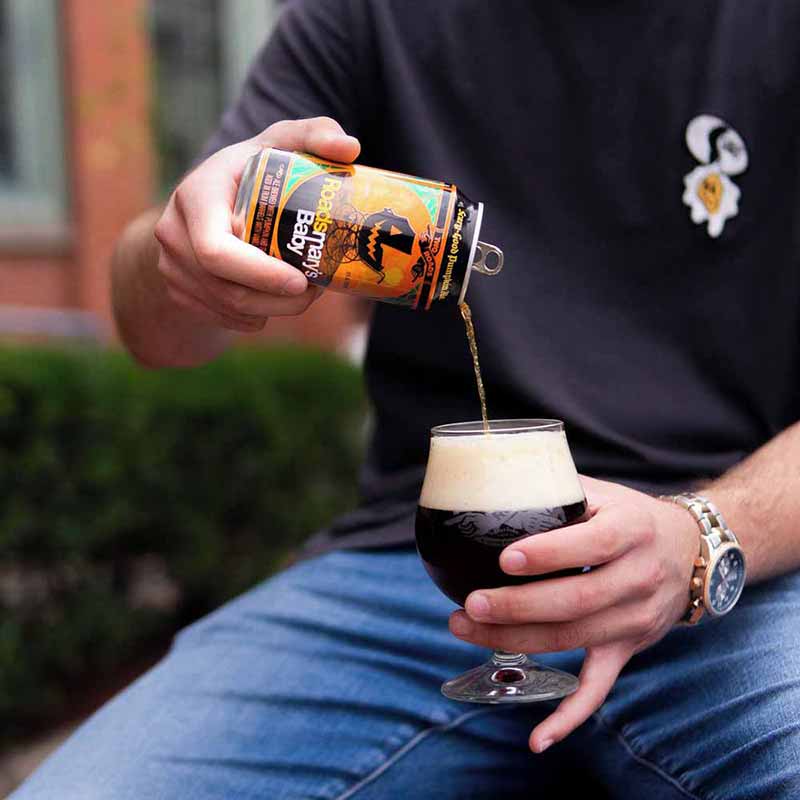
Photography courtesy of @tworoadsbrewing
Dealer’s choice. You can make pumpkin beers using a litany of styles as the vehicle.
Bastet takes a standard approach to a beer with some specialty malts and complex sugars. But he says the beer can head in so many different directions.
“Our most popular [pumpkin beer] is thick, slightly decadent, but not super sweet,” Lett says.
Pugsley insists that it depends on what the brewer wants. He believes from a selling standpoint, a lighter wheat beer would work quite well. He suggests other methods for tackling the style.
“You can take a well-balanced amber, strong ale, or stout and blend in an appropriate amount of pumpkin for a sipping product,” he says. “It really depends on what you’re looking for.”
Two Roads uses an amber base for its pumpkin beer, but Markowski advises brewers to give their own unique twist to their pumpkin beers.
“I would encourage brewers to have your pumpkin beer have an original take. Maybe do a blonde, a stout. Do something a little different,” Markowski says. “We age ours in rum barrels. It picks up added alcohol there and gives the appearance of drying out.”
What Is an Ideal Pumpkin Beer Grist?
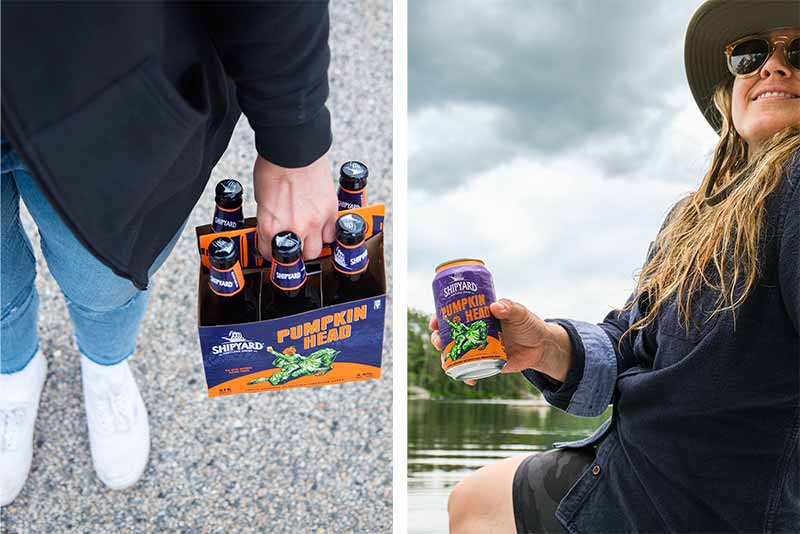
Photography courtesy of Shipyard Brewing Company
Making an amber ale aged in rum barrels, Two Roads has a simplistic grist for its pumpkin beer.
“We use pilsner malt for a base, with some pale wheat malt,” Markowski explains. “We also add caramel malts—around C40 to C50—and chocolate malt for color.”
Lett explains for its grist bill Bastet uses about seventy-five to eighty percent base malts, another ten to fifteen percent specialty malts, five percent flaked oats, and five percent complex sugars.
“Something like maple syrup, dark candi, or brown sugar,” Lett explains. “We also add six to ten pounds of pumpkin per barrel in the mash.”
Pugsley says they would use a base pale or pilsner malt for their pumpkin beer, with some wheat for head retention and crystal, Munich, or Vienna malts for color or sweetness.
“We’re producing the beer for drinkability,” he explains. “There are no wrongs or rights depending on sweetness or drinkability.”
What Type of Hops Works Best in Pumpkin Beer?
For Pugsley, he says Noble hops work the best in these beers.
“Balance the beer from as low as six to seven IBUs to as high as twenty IBUs,” he says. “We keep ours on the lower side.”
Markowski says they initially use Herkules hops for a bittering charge and then stick to a Noble hop toward the end of the boil.
“For our pumpkin beer, we use Hallertau Mittelfruh, which we add with about fifteen minutes left in the boil,” he explains.
Lett didn’t divulge the hops for their pumpkin beer but explained that the hops aren’t the headliner of the act. Basically, the hops are a means to an end.
“We only add hops for balance right at sixty minutes,” Lett says. “For us, hops are not the star of the show. The pumpkin and spices are. We like to keep the IBUs in the fifteen to twenty range.”
Three Examples of a Great Pumpkin Beer
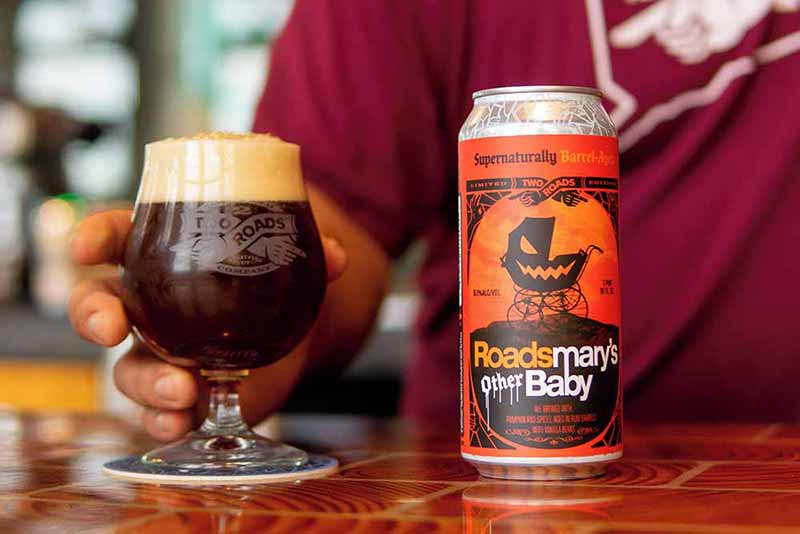
Photography courtesy of @tworoadsbrewing
Shipyard’s Pumpkinhead, at 4.5% ABV and 18 IBUs, is the one that immediately comes to mind for Pugsley.
“Numbers don’t lie. Consistently we’ll sell thirty to forty thousand barrels of it a year,” Pugsley says. “And it reaches a lot of taste palates. Light beer drinkers are dying for Pumpkinhead; it helped beer drinkers head to the craft beer world, and even strong IPA drinkers go to it and enjoy it. It’s for all palates.”
Two Roads Roadsmary’s Baby is the brewery’s rum barrel-aged pumpkin ale. The beer sits at 6.8% ABV and has notes of pumpkin (obviously), vanilla, oak, and rum.
“Ours has a little more added complexity than others on the market because of the barrel aging,” Markowski says. “I feel we achieve all the points I’ve alluded to—balance; no one ingredient outpaces the other; and the spices are noticeable but don’t overwhelm the base beer either.”
Lett points to Bastet Brewing’s Tater Pumpkinator as the brewery’s top pumpkin beer. At 9.3% ABV and 18 IBUs, the beer is approaching a table beer good for sharing. This pumpkin ale emits notes of pumpkin, sweet potato, vanilla, cinnamon, and nutmeg.
“It performed so well because it was the best of both worlds,” Lett says. “It literally tasted like sweet potato pie and pumpkin pie.”



